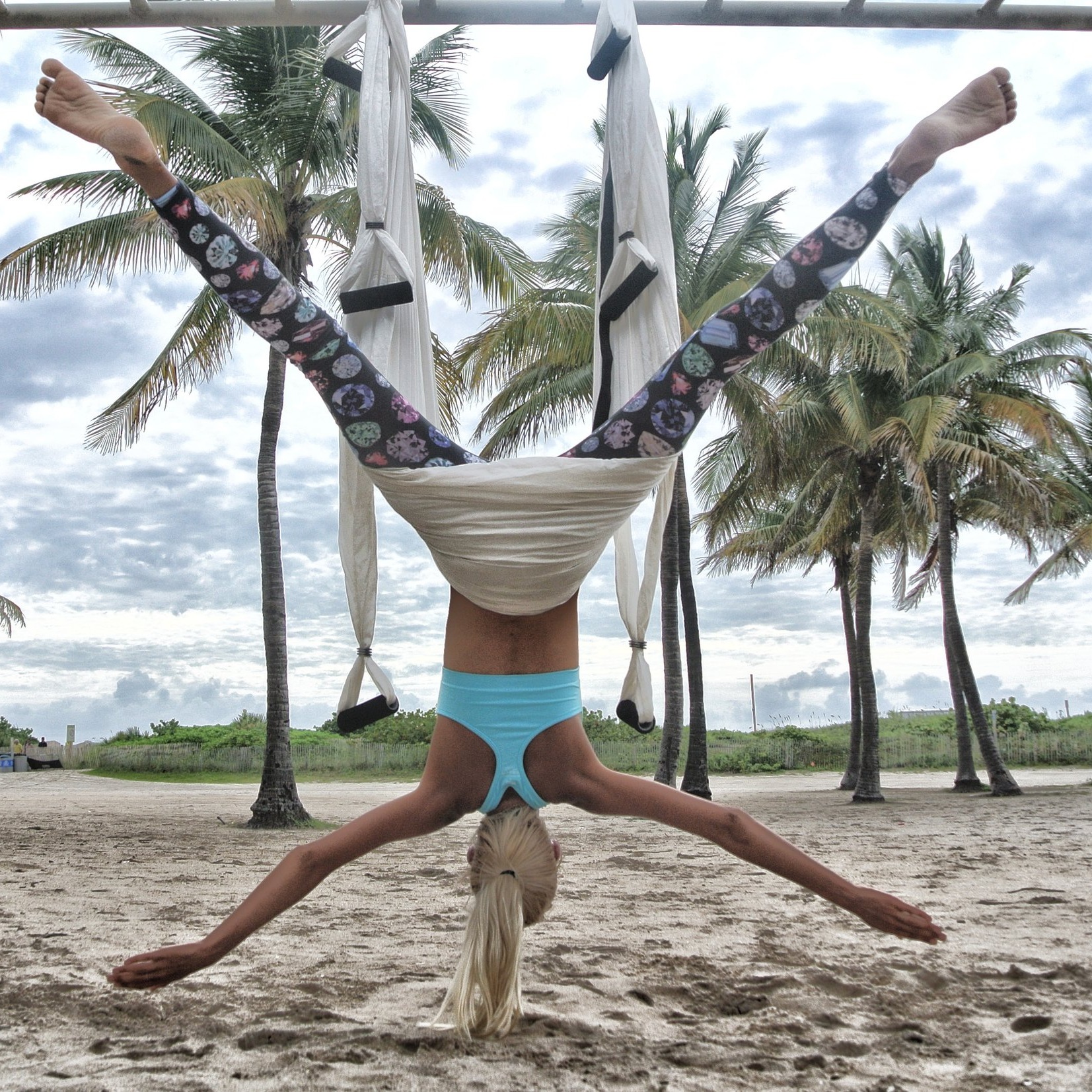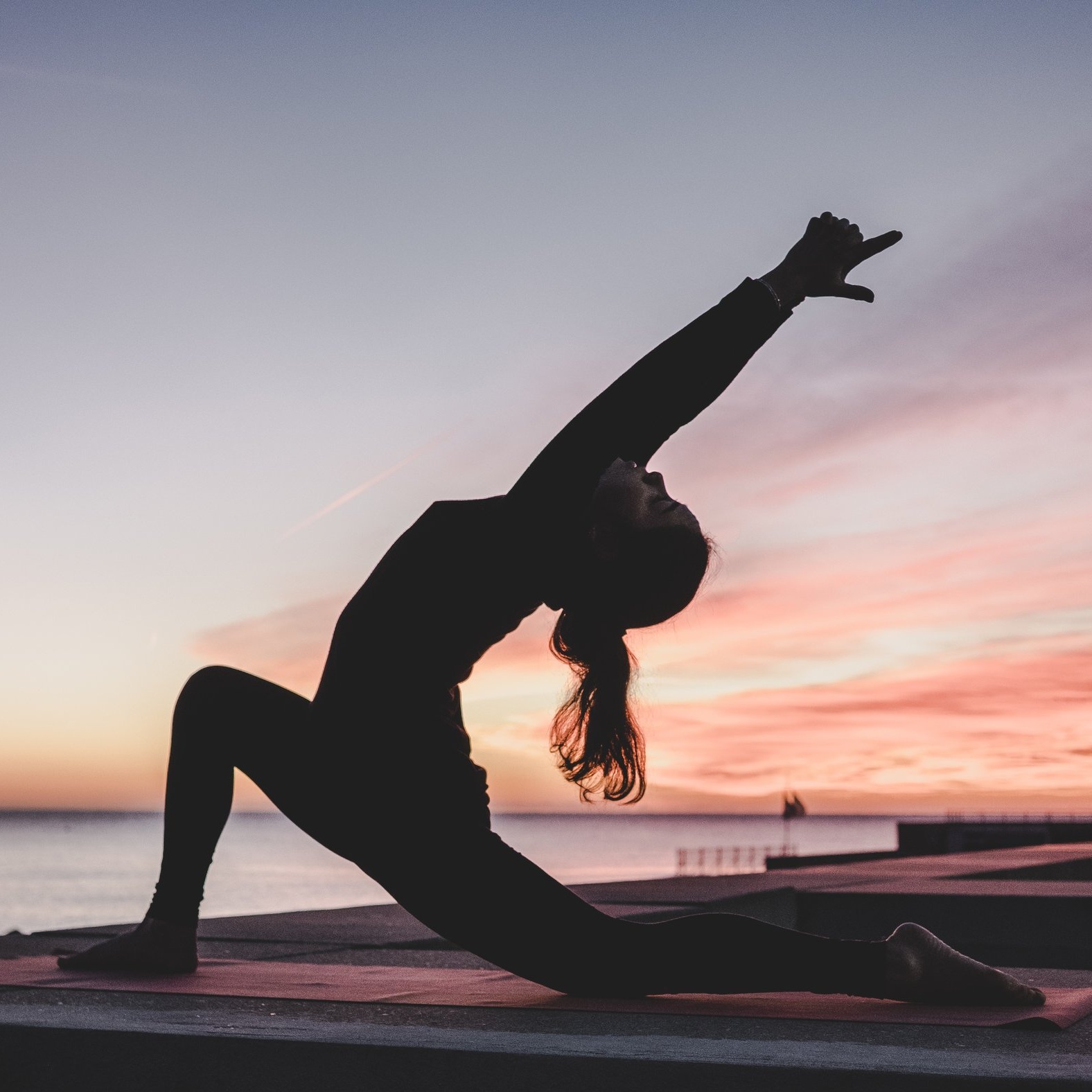Beginner's Guide to Styles of Yoga
Have you recently started your yoga journey? Sometimes just looking at a yoga schedule can be overwhelming. How can a beginner know the difference between Hot 26 and Power Yoga? Or Hatha and Vinyasa? Finding a style that suits your needs can be a long process so we've decided to help you along the way. We've created a little Cheat-Sheet guide of the most common styles found in South Africa for all our beginner yogi's!
Acro Yoga
Acro yoga is a combination of yoga and acrobatics. It takes your yoga practice from the earth to the air. Using the concepts and asanas (postures) of yoga, this style incorporates a lot of trust and power. Movement is linked to breath as yoga postures are performed in an L-based acrobatic flying position. This style is usually performed in pairs; namely the base and the flyer, with an optional spotter for support. It is dynamic, empowering and playful!
Best for: Adventurous, playful yogis who want to work on strength and body awareness. It is also a great way to build trusting relationships!
Aerial Yoga
Also known as anti-gravity yoga, aerial yoga was invented by aerial performer Christopher Harrison, a former gymnast and Broadway choreographer. Students make use of a hammock which acts as a swing/ trapeze. Yoga postures are performed with the assistance of the hammock to increase strength and flexibility. Did we mention its super challenging, and super fun?
Best for: Playful and experimental yogis who are looking at building body awareness, increasing strength as well as flexibility.
Ashtanga
Ashtanga is a traditional practice based on ancient yoga teachings. It was brought to the Western World by Pattabhi Jois (this name might ring a bell). It’s a rigorous style consisting of 6 set sequences, primary series, secondary series etc. It is similar to Vinyasa in the sense that ujjayi breath is linked to movement. Ashtanga practitioners will perform the same poses in the same order each practice. Its intense and physically demanding. Mysore is a specific ashtanga class which are not led by a teacher.
Best for: Type A’s. Dedicated Yogi’s who enjoy a strict and routine practice
Bhakti Yoga
Bhakti is a Sanskrit word which means "devotion". This style of yoga includes a physical practice as well as chanting, praising, and singing the various names of the Divine.
Best for: Spiritual practitioners, those who enjoy yoga philosophy and chanting.
Bikram
Like Ashtanga, Bikram is also a set sequence. It consists of a series of 26 poses which are performed twice each within a 90 minute class. Oh, did we mention it is done in a room heated to 37 degrees?! The Bikram sequence is trademarked by Bikram Choudhury. In this style, it definitely gets hot and sweaty!
Best for: Beginners or students who love the predictability of the sequence. Also great for sweat-lovers who want to work on flexibility.
Budokon
Hot and fresh on the South African scene! Budokon, meaning “the way of the warrior spirit”, is a combination of yoga, martial and living arts. It is founded on integrating six pillars; movement, thoughts, emotions, relationships, environment and nutrition. Strongly based on hatha yoga, Budokon combines flow with circular rotation and movement.
Best for: Those who want to combine various movement styles into their practice.
Forrest Yoga
Developed by Ana Forrest, this style is known for being an intensely physical and challenging practice. There is a strong focus on breath, strength, integrity and spirit. This style facilitates growth and stepping out of your comfort zone.
Best for: Those who want to be challenged in their practice and work on strength
Hatha
Hatha yoga is the umbrella term for any type of yoga that teaches physical postures. "Ha-tha"meaning "Sun-Moon" is also described as the foundation of yoga - using body and breath to detox the body and obtain stillness in the mind. Nearly every type of yoga class taught in the West is hatha yoga. It might not get you sweating but you will still walk out the studio feeling looser and relaxed!
Best for: Beginners
Hot Yoga
Sorta like Bikram but not really. The main difference between the two is that Hot Yoga will have a more unique sequence, which will be different in each yoga class. It will still be heated and you will still sweat loads! Many studios add their spin by combining hot yoga with other styles; Hot Vinyasa, Hot Power etc.
Best for: Hardcore yogis who are looking at building strength as well as flexibility… and getting sweaty!
Power Yoga
This dynamic style incorporates physical postures into a sequence which is designed to increase strength and challenge the body. Power Yoga generally appeals to those who enjoy dynamic exercise,
Best for: Students who love high-intensity, heart racing, strong and powerful movement!
Iyengar
Iyengar yoga was developed by B.K.S. Iyengar. It is an extremely particular style of yoga, paying most attention to alignment. Yoga props are often used to ensure proper alignment; blocks, blankets, straps, chairs, bolsters are all common. Although it is of moderate intensity, it can be physically challenging.
Best for: Geriatric students, Students with injuries or chronic illnesses. Students who are detail-oriented and like to focus on alignment and anatomy.
Pre-Natal Yoga
These classes are specifically designed for women during their pregnancy. These is a strong focus on breath, gentle stretches as well as incorporating relaxation.
Jivamukti
Founded in 1984 by Sharon Gannon and David Life, Jivamukti is a physical, ethical and spiritual practice. It is high intensity vinyasa-based physical practice that is combined with shastra (scripture), bhakti (devotion), ahimsa (non-violence), nada (music) and dhyana (meditation). Jivamukti yogis are often, but not always, vegans, environmentalists and rights activists.
Best for: Students looking to deepen their spiritual practice.
Yin Yoga
Yin Yoga is based on the Taoist concept of Yin and Yang. “Yin”= feminine and passive where “Yang”= Masculine and moving. Therefore, yin yoga can be described as a slower paced style of yoga, where postures are held for a longer period of time. The focus is on releasing the connective tissue (tendons, ligaments and fascia) to improve flexibility and relaxation.
Best for: Students who want to distress and unwind!
Restorative Yoga, not to be confused with Yin Yoga, is the use of props to allow the body to feel more supported. Therefore, a great style for students with injuries or illness, who want to use yoga to restore the body to a normal, healthy state.
Kundalini
Kundalini is also known as the “Yoga of awareness” as it aims to nurture and develop the spiritual potential of a yogi. This style focuses on awakening the Kundalini energy which can be found in the 7 chakras/ energy wheels of the body. It is a strong blend of physical and spiritual practice, combining movement, breathing techniques as well as meditation and chanting.
Best for: Students looking for a spiritual practice, something deeper than just physical awareness.
Vinyasa
Vinyasa, probably the style you’re confronted with most, is also often referred to as “flow”. Vinyasa is a Sanskrit word meaning “breath-synchronized movement”, or “to arrange in a special way”. In this style, poses are sequenced in a unique and creative way, where students can flow from one posture to another. Breath is strongly linked to movement as the sequences progress. Vinyasa classes are of moderate to vigorous intensity.
Best for: Students who love high-intensity, heart racing, free and flowy movement!
Still not sure? Maybe just try them all!

















